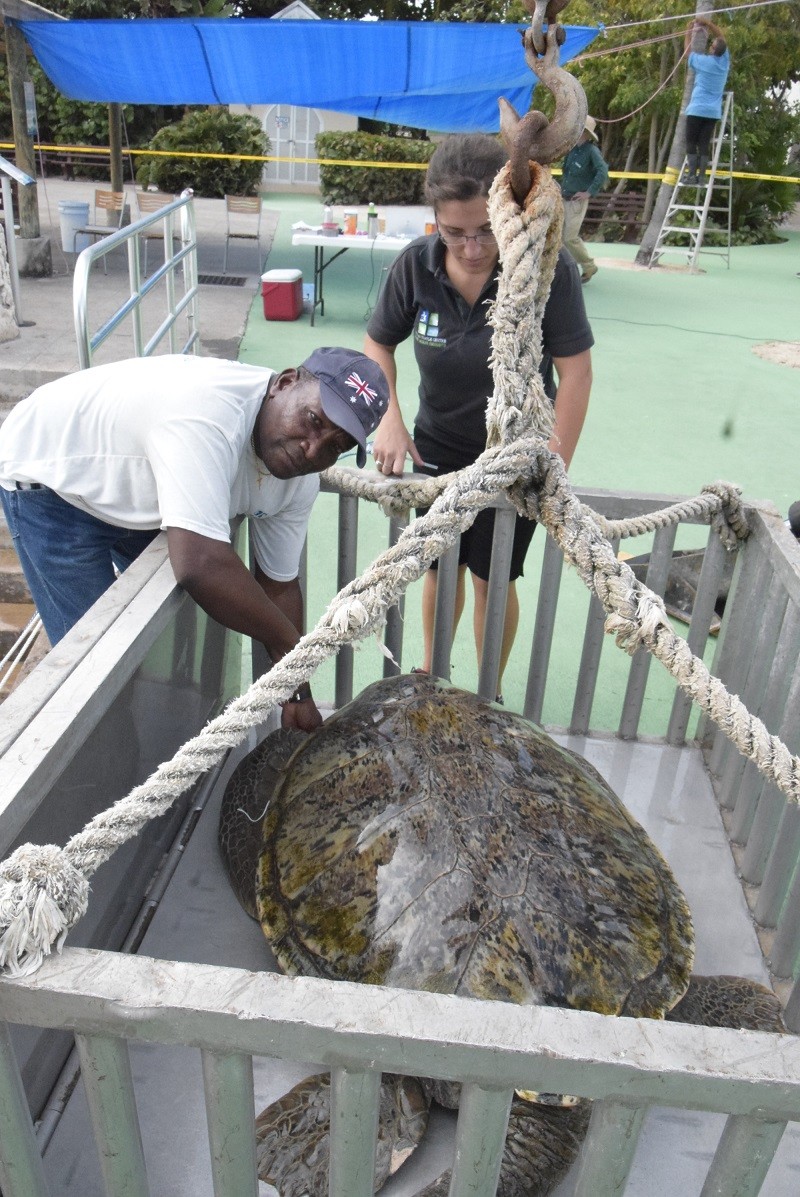Do not refresh or close this window.

Do not refresh or close this window.


Share
The mature turtles of the Cayman Turtle Centre’s Greens Breeding Bay mate and lay their eggs on the bay's sandy beach during their nesting season which lasts from April through to September. These turtles are all very important to the Centre’s conservation programmes, and great care is taken to ensure that they are healthy. Once a year after one nesting season ends, but before another begins, each turtle has to be rounded up and lifted out of the pond to be measured, weighed, and given a health check-up by the Centre’s onsite veterinarians, Dr Vandanaa Baboolal and Dr Francesca Casella.
It takes a long time to check all 290 turtles because they are all swimming freely and the bay they live in is large and deep. They are also very heavy, weighing from around 190 to as much as 540 pounds each, so they have to be lifted out using a crane and a sturdy steel-framed box with an opening door. Once inside the box, our veterinarians can perform individual physical exams.
Sparky is still the heaviest and the biggest turtle in size in our breeding pond, weighing in at 510lbs with a shell that measures 125cm in length. The weights of the other mature turtles surveyed ranged from 125lbs to 510lbs. The average weight was 310lbs and it took a total of 11 days to complete the health checks. We are happy to report that all of the turtles are in good health and had maintained very similar weights compared to last year.
The Centre’s Turtle Husbandry Manager, Jerris Miller, said: “We measure each one of them, the length and the width, the veterinarians give them a medical checkup and we put them back into the Breeding Bay. We want to make sure they are maintaining healthy weights and so we compare last year’s weights and numbers to this year’s. We keep our statistics together so we can see how individual turtles grow.”
Of course, it is good to make sure each of the turtles is fit and healthy. But it also serves the purpose of an auditor’s inventory count, as well as being a valuable and unique source of scientific data, for those who are engaged in studies of Green turtles.
Cayman Turtle Centre is one of a tiny handful of turtle conservation facilities in the world, where data on Green sea turtles at every stage of their lifecycle are available. “We can go back over 20 years with very accurate records,” Mr Miller said. “It is an invaluable database, to better help in understanding Green sea turtles,”
The mature breeding turtles in the Centre’s breeding bay are a major part of the facility’s conservation programmes, which include the release of Green sea turtles into the wild. More than 34,000 turtles have been released into the sea through the Centre’s hatchling and head-starting release programmes. This has been proven to be effective through an independent Darwin Plus study, headed by the Cayman Islands Department of Environment, University of Barcelona and the University of Exeter. This study showed that no less than 90% of the wild Green sea turtles nesting in Cayman are genetically related to the Centre’s breeding stock.